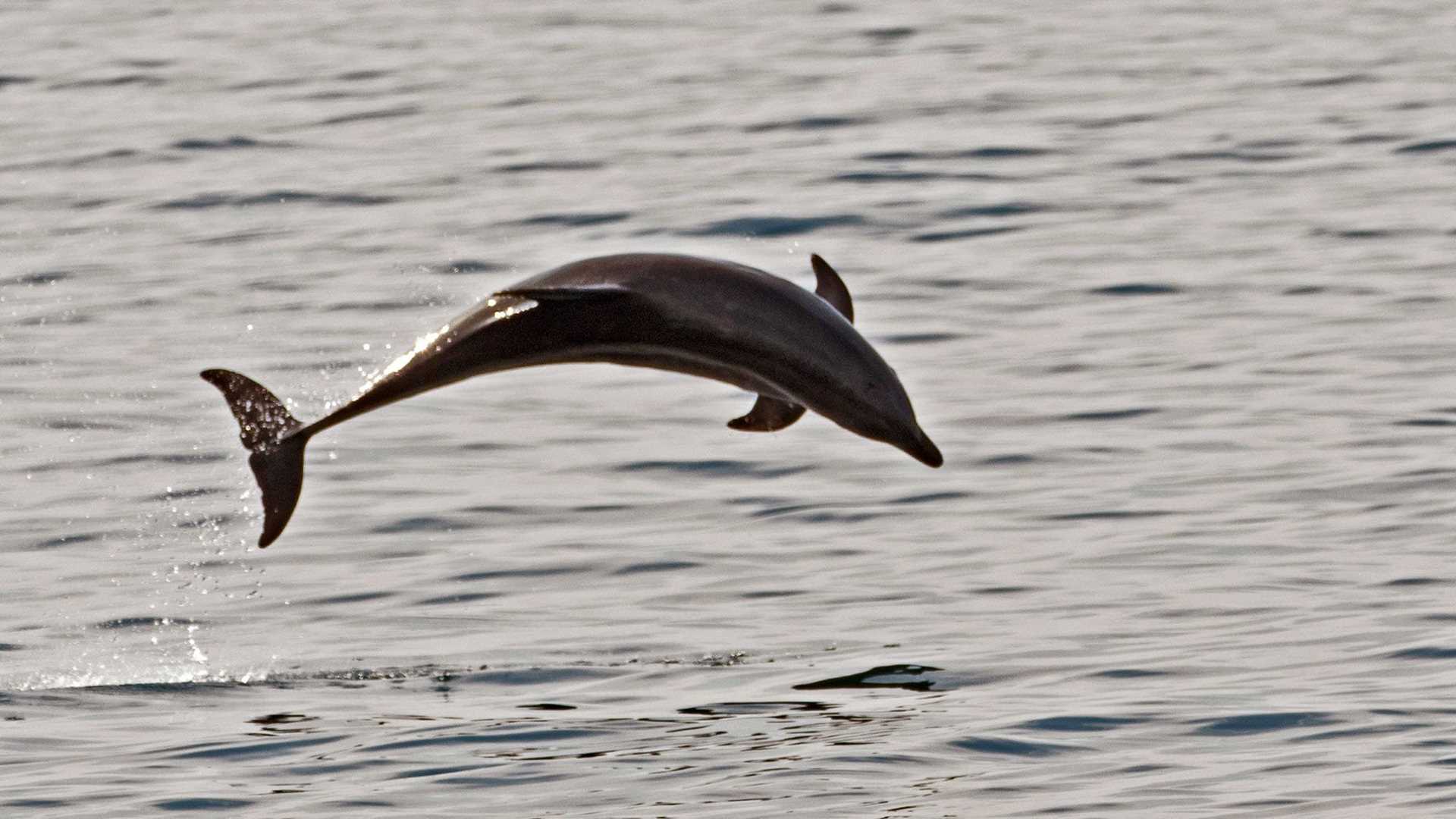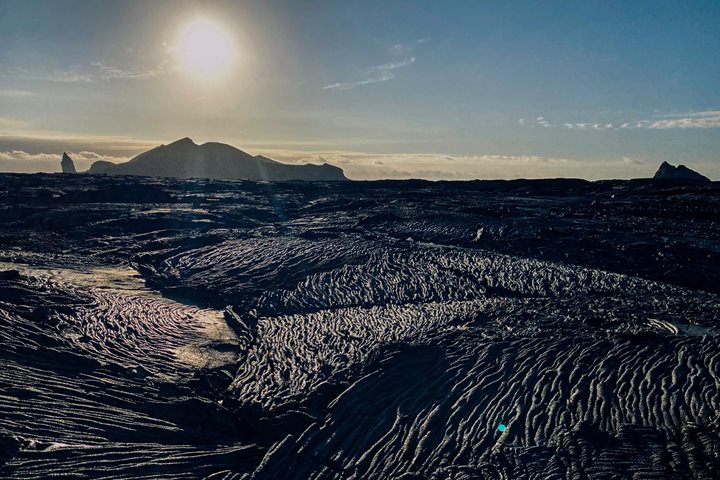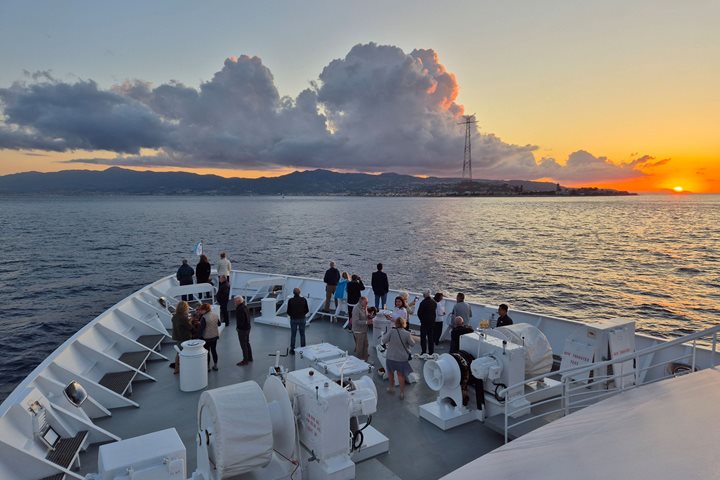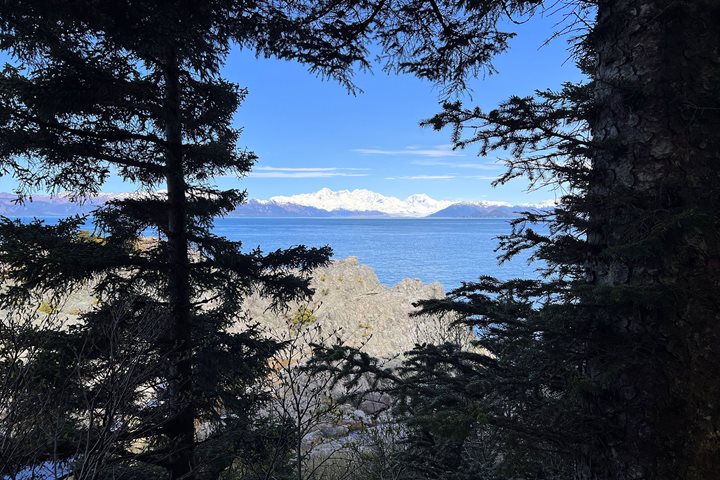Bartolome Island, Galápagos
Galápagos Aboard National Geographic Endeavour II, March 24, 2022

Sunrise on Bartolome Island. Located on the eastern side of Santiago Island, Bartolome is perhaps one of the most visited islands in the Galapagos. —Charles Wittmer, Naturalist
Eleuthera, Bahamas
Exploring the Bahamas’ Out Islands: Natural Wonders & Hidden History, March 25, 2022

In the afternoon, we headed to the Leon Levy Native Plant Preserve, a 30-acre botanical garden located in central Eleuthera. This plant preserve, the first national park established on the island, aims to showcase and preserve native and endemic plant species of the Bahamas.
During our guided tour of the premises, we learned about the medicinal uses of many of the native plant species, as well as the history behind them. The preserve’s lush mangroves, freshwater wetlands, and coppice forests are rich with wildlife, including the endemic Bahama woodstar and the Bahama slider. —Zoe Brown, Naturalist (photo by Steve Backus)
North Seymour Island, Galápagos
Galápagos Aboard National Geographic Endeavour II, March 27, 2022

As guests tried to take a family picture on Seymour Island, this pair of blue-footed boobies started a mating dance. As part of his performance, the male opens his wings, sings softly, and shows his blue feet to the female. Taking your girl to the dance is not good enough if you do not give her a present. Not flowers or chocolates, but small pieces of carefully chosen wood are delivered on his blue feet. They do it all to win the female’s attention. So romantic. —Africa Berdonces, Naturalist
Conception Island, Bahamas
Exploring the Bahamas’ Out Islands: Natural Wonders & Hidden History, March 28, 2022

Most of us know about the clarity of the vibrant blue waters before we visit the Bahamas. Seen from space, the water shines in the azure ocean, standing out dramatically from surrounding waters. Even with this knowledge, it is always a pleasant surprise to see the colors pop as the sun paints the sea around us each morning. As if the dawn light illuminating the sky isn’t enough, it then strikes the ocean. These famous blue waters glow dramatically. —Steve Backus, Naturalist
Isabela Island, Galápagos
Wild Galápagos Escape, March 28, 2022

After an amazing full day on North Seymour and Rabida Islands, National Geographic Islander set sail toward the westernmost part of the archipelago. Isabela Island has five active volcanoes, and Wolf is the tallest. For the last two months, it has been pouring molten rock that almost reaches the ocean. —Walter Perez, Naturalist/Certified Photo Instructor
Fernandina Island, Galápagos
Galápagos Aboard National Geographic Endeavour II, March 28, 2022

Galapagos flightless cormorant looking for some breakfast. —Omar Adrian, Naturalist
Punta Vicente Roca, Galápagos
Wild Galápagos Escape, March 29, 2022

Short-finned pilot whales are found in tropical and temperate waters. Their pods generally contain 15-50 individuals. When travelling placidly and searching for food, their formations are known as “chorus lines.” —Carlos Romero, Expedition Leader




